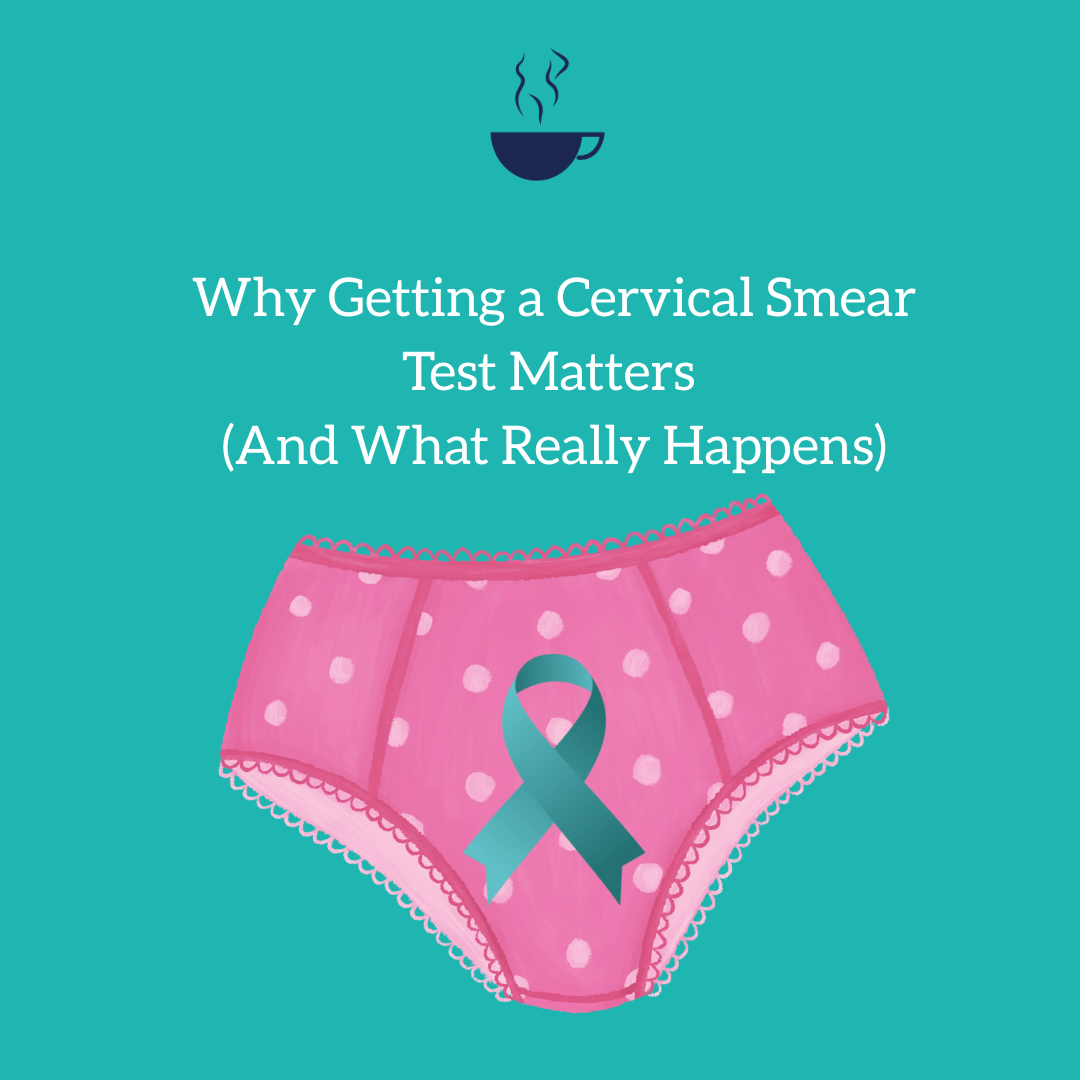Why Getting a Cervical Smear Test Matters (And What Really Happens)

Let’s be real - booking a cervical smear test (also called cervical screening or a Pap smear) isn’t exactly high on anyone’s list of fun things to do. But this quick, simple check is one of the best ways to protect your health and peace of mind.
Why Is a Cervical Smear Test So Important?
The cervical smear test isn’t a test for cancer—it’s designed to help prevent cancer. The test checks for certain types of human papillomavirus (HPV), a really common virus, that can sometimes cause changes in the cells of your cervix.
A cervical screening saves lives, by picking up on high-risk HPV or early cell changes, and catch problems before they turn into anything serious.
Regular screening saves thousands of lives every year in the UK.
What is HPV?
HPV is super common. Most people will get HPV at some point, and it’s nothing to be embarrassed about. Usually, your body gets rid of the virus without any issues, but sometimes it sticks around and can cause cell changes that could turn into cervical cancer if left unchecked.
Early action is easy action. If anything unusual is found, it can be monitored or treated early—long before it becomes a bigger problem.
What Happens During the Screening?
Knowing what to expect during the screening, can make the process less daunting, as you will feel more empowered, and know exactly what is going to happen and when:
1) First you will undress from the waist down behind a curtain. This is easier if you are wearing a skirt or dress, as you’ll only need to take off your underwear. The health care professional will give you a sheet to cover up, so you won’t feel as exposed.
2) You will be asked to lie down on an exam bed. Most people lie on their back with knees bent and feet together, but you can ask for a different position if that’s more comfortable for you.
3) Your healthcare professional will gently insert a speculum. This is a smooth, tube-shaped tool that holds your vagina open so they can see your cervix. A bit of lubricant is used to make it more comfortable.
4) The healthcare professional uses a small, soft brush to gently take a sample of cells from your cervix. This part is usually over in seconds. Most people find it a bit awkward or mildly uncomfortable, but it shouldn’t be painful. If you do feel pain, let the healthcare professional know straight away, so that they can make adjustments to help you feel at ease.
5) That’s it! The speculum is removed, you get dressed, and your sample is sent to a lab to be checked for HPV and any abnormal cells.
REMEMBER
- You are in control.
- You can ask the nurse to stop at any time.
- You can always ask questions before, during, or after the test.
The whole appointment usually takes about 10 minutes, and the test itself is less than 5 minutes.
If you’re nervous or have concerns (about pain, previous experiences, or anything else), let your healthcare professional know, as they are there to help you feel comfortable.
Most people go about their day as usual afterwards. Occasionally, you might have a tiny bit of spotting, but that’s normal and goes away quickly.
Cervical smear tests might not be glamorous, but they are a simple, powerful way to look after your health. They catch problems early, save lives, and give you peace of mind—so when your invite comes through, book it in. Your future self will thank you!










Comments